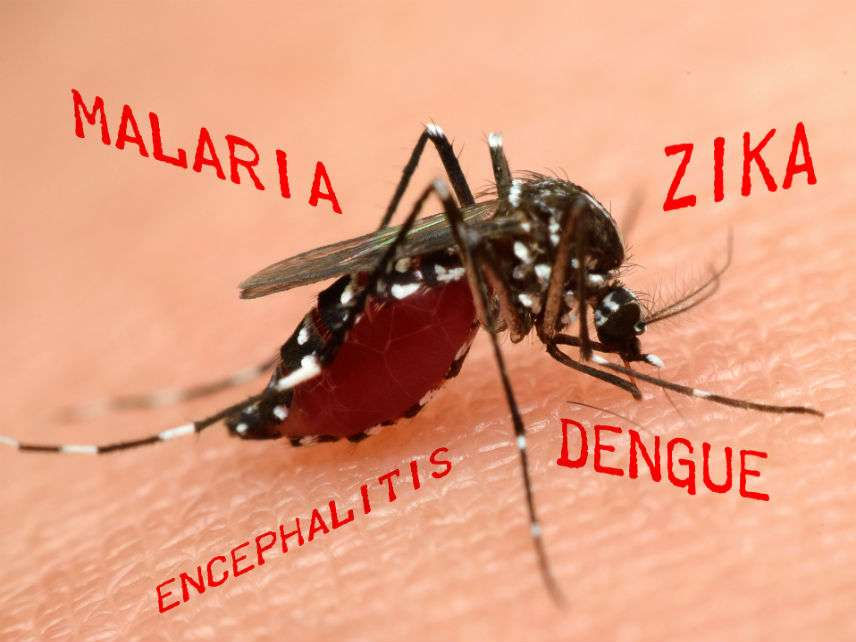Over-Regulation Is Making Us More Vulnerable to Disease
- OurStudio

- May 8, 2018
- 3 min read

Pongmoji/Dreamstime
"Climate change needs to be put out there as a major driver of vector-borne disease in the U.S.," Peter Hotez, dean of the National School of Tropical Medicine at Texas' Baylor College of Medicine, told Gizmodo. This was in response to a new study from the Centers for Disease Control and Prevention that reports of vector-borne diseases have tripled since 2004. These infectious illnesses include Lyme disease that is spread by ticks, and West Nile and Zika viruses spread by mosquitoes. The CDC report is indeed alarming, but not chiefly because climate change is exacerbating certain infectious maladies. Instead, the increase in vector-borne illnesses identified by the CDC says much more about how the proliferation of regulatory barriers is slowing the development and deployment of modern technologies to prevent the spread of disease.
While it is likely that warmer temperatures do create more favorable conditions for some disease-carrying species of mosquitoes and ticks to proliferate, preventing climate change is not the way humanity will eventually control these diseases. Vector control and vaccines are.
Consider the cases of malaria and yellow fever, both of which were mosquito-borne illnesses that afflicted much of the United States until the 20th century. They were eliminated by draining swamps, dusting breeding areas with insecticides like DDT, and installing more window screens in houses. Intensive mosquito control efforts were actually able to eliminate Zika virus in the Miami, Florida, area.
New vector control methods include genetic changes that prevent mosquitoes and ticks from harboring disease microbes or by eliminating the blood-sucking parasites themselves. For example, researchers have suggested that they could break the chain of Lyme disease infection by engineering a gene drive that would prevent mice upon which Lyme disease-carrying ticks feed from becoming infected with the microbe. A gene drive works by making sure that both copies of a targeted natural gene are replaced with the engineered version, so that a desired trait will spread rapidly through a whole population of sexually reproducing organisms.
Gene drives also make it possible to essentially eliminate disease-carrying species by, for example, making sure that the vast majority of their progeny are male. This would be a handy way to kill off the introduced Aedes Aegypti mosquito that spreads Zika and West Nile virus in the U.S. In the meantime, while researchers are still perfecting gene drives and waiting for regulatory approval, the Kentucky-based MosquitoMate company is releasing male Aedes aegypti mosquitoes infected with Wolbachia bacteria to mate with wild female mosquitoes. Wolbachia-infected eggs do not hatch. Using a different approach, the British company Oxitec has genetically engineered Friendly™ GMO mosquitoes that can be deployed to spread a gene that is lethal to the larva of the disease-carrying pests. In Brazil, the release of Oxitec's mosquitoes reduced the transmission of dengue fever by more than 90 percent.
Preventing disease by controlling pests that carry infectious microbes out in the wild is good, but so too is protecting ourselves by revving up our individual immune systems. It is scandalous that there are effective veterinary vaccines to prevent Lyme disease in dogs and West Nile virus in horses while human vaccines to prevent these maladies languish. Unable to mobilize our immune systems to defend against these diseases by means of modern vaccines, we are advised to avoid walking in fields and woods, to wear long sleeve shirts and pants in the summer and to slather ourselves with noxious insect repellants.
So why are there no human vaccines for the diseases identified in the CDC report? In the case of Lyme disease there was once a human vaccine. However, its manufacturer withdrew it from the market in 2003 as a result of a class action lawsuit filed against it by some anti-vaccine fearmongers. More generally, vaccine development lags in part because the onerous process for creating and obtaining regulatory approval of new vaccines has increased to between five to 18 years. In addition, pharmaceutical companies that have rushed to develop vaccines in response to emergencies like the West African Ebola and the Brazilian Zika outbreaks have learned that they cannot recover their costs as vaccine demand dissipated along with the crises.
A new techology, however, in which researchers create vaccines by synthesizing DNA and RNA from the genetic sequences of disease-causing bacteria and viruses offers the prospect of dramatically shortening development time and cutting costs. Once injected, these genetic sequences provoke cells to make microbial proteins that then instigate an immune response in the vaccinated person. Inovio Pharmaceutical's synthetic DNA Zika vaccine took just seven months from the time it was first designed until the start of the clinical trial. It was 100 percent effective in its phase I trial.
Rising temperatures do not cause infectious disease, microbes do. Excessive regulatory precaution is the main driver for the rise in vector-borne illnesses in this country.




Comments